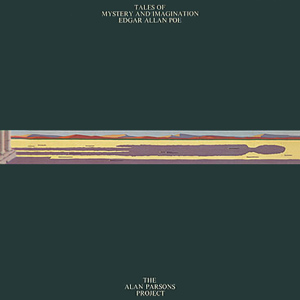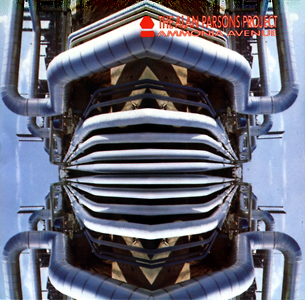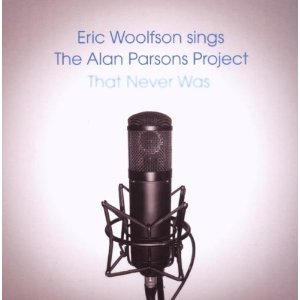
The Alan Parsons Project were a British rock band active between 1975 and 1990, whose core membership consisted of producer, audio engineer, musician and composer Alan Parsons and singer, songwriter and pianist Eric Woolfson. They were accompanied by varying session musicians and some relatively consistent session players such as guitarist Ian Bairnson, arranger Andrew Powell, bassist and vocalist David Paton, drummer Stuart Elliott, and vocalists Lenny Zakatek and Chris Rainbow. Parsons and Woolfson shared writing credits on almost all of the Project's songs, with Parsons producing or co-producing all of the band's recordings.

Tales of Mystery and Imagination (Edgar Allan Poe) is the debut studio album by British rock band The Alan Parsons Project. It was released on 25 June 1976 in the United Kingdom by Charisma Records. The lyrical and musical themes of the album, which are retellings of horror stories and poetry by Edgar Allan Poe, attracted a cult audience. The title of the album is taken from the title of a collection of Poe's macabre stories of the same name.

Ammonia Avenue is the seventh studio album by the British progressive rock band The Alan Parsons Project, released in February 1984 by Arista Records. The Phil Spector-influenced "Don't Answer Me" was the album's lead single, and reached the Top 15 on the US Billboard Hot 100 and Mainstream Rock Tracks charts, as well as the fourth position on the Adult Contemporary chart. The single also reached the Top 20 in several countries and represents the last big hit for the Alan Parsons Project. "Prime Time" was a follow-up release that fared well in the Top 40, reaching No. 34. "You Don't Believe" was the first single in November 1983, reaching #54 on the Billboard Hot 100 and "Since the Last Goodbye" was a minor hit.

Eric Norman Woolfson was a Scottish songwriter, lyricist, vocalist, executive producer, pianist, and co-creator of the band The Alan Parsons Project, who sold over 50 million albums worldwide. Woolfson also pursued a career in musical theatre.

I Robot is the second studio album by British rock band The Alan Parsons Project, released on 8 July 1977 by Arista Records. The album draws conceptually on author Isaac Asimov's science fiction Robot stories, exploring philosophical themes regarding artificial intelligence. It was re-released on vinyl and cassette tape in 1984 and on CD in 2017.

Eye in the Sky is the sixth studio album by British rock band the Alan Parsons Project, released in May 1982 by Arista Records. At the 25th Annual Grammy Awards in 1983, Eye in the Sky was nominated for the Grammy Award for Best Engineered Album. In 2019, the album won the Grammy Award for Best Immersive Audio Album at the 61st Annual Grammy Awards.

Pyramid is the third album by progressive rock band The Alan Parsons Project, released in May 1978. It is a concept album centred on the pyramids of Giza. At the time the album was conceived, interest in pyramid power and Tutankhamun was widespread in the US and the UK. Pyramid was nominated for the 1978 Grammy Award for Best Engineered Album, Non-Classical.

Eve is the fourth studio album by British rock band The Alan Parsons Project, released in September 1979 by Arista Records. The album's focus is on the strength and characteristics of women, and the problems they face in the world of men. It had originally been intended to focus on "great women in history", but evolved into a wider concept. The album name was the same as Eric Woolfson's mother-in-law.

The Turn of a Friendly Card is the fifth studio album by the British progressive rock band the Alan Parsons Project, released in 1980 by Arista Records. The title piece, which appears on side 2 of the LP, is a 16-minute suite broken up into five tracks. The Turn of a Friendly Card spawned the hits "Games People Play" and "Time", the latter of which was Eric Woolfson's first lead vocal appearance. An edited version of the title piece combining the opening and ending parts of the suite was also released as a single along with an official video.

Vulture Culture is the eighth studio album by the Alan Parsons Project, released in 1985 via the Arista label.

Gaudi is the tenth album by The Alan Parsons Project, released in 1987. Gaudi refers to Antoni Gaudí, the Catalan Spanish architect, and the opening track references what is probably Gaudí's best known building, the Sagrada Família.

David Paton is a Scottish bassist, guitarist and singer. He first achieved success in the mid-1970s as lead vocalist and bassist of Pilot, who scored hits with "Magic", "January", "Just a Smile" and "Call Me Round" before splitting in 1977. Paton is also known for his work in the original lineup of The Alan Parsons Project (1975-1985), and for working with acts such as Kate Bush, Camel and Elton John.

Freudiana is a rock opera by Eric Woolfson. It was to be the 11th album by the Alan Parsons Project, but during its development, Woolfson had creative differences with Alan Parsons. The production, released in 1990, utilizes the Project's personnel as well as many guest vocalists. Alan Parsons later began his career as a solo artist with his 1993 album Try Anything Once, which was musically in a direction more or less continued from that of the Project's 1987's Gaudi.
"(The System of) Dr. Tarr and Professor Fether" is a 1976 single by The Alan Parsons Project which first appeared on their album Tales of Mystery and Imagination: Edgar Allan Poe. The single reached number 37 on the US Billboard Hot 100 and number 62 in Canada. Like the other songs on the album, it is based on a story by American author Edgar Allan Poe, in this case "The System of Doctor Tarr and Professor Fether" (1845); the song was written by Alan Parsons and Eric Woolfson, and was originally recorded at Abbey Road Studios, London in September 1975. The 1987 reissue featured a "cathedral organ".

The Essential Alan Parsons Project is a compilation album released by English progressive rock musician Alan Parsons and The Alan Parsons Project on 6 February 2007. It was released through Sony BMG as part of The Essential album series. The album featured some of the band's best known songs as well as some rare tracks.

The Definitive Collection is a 1997 2 CD compilation by The Alan Parsons Project, released through Arista Records. It includes two songs taken from Alan Parsons' first solo album.

Eric Woolfson sings The Alan Parsons Project That Never Was is an album by the progressive rock musician Eric Woolfson, co-creator with Alan Parsons of The Alan Parsons Project, as well as main songwriter and manager of the band. Released in 2009, this was Woolfson's final album before he died of cancer in December of that year. The album includes songs that remained unreleased since the Project time for various reasons; however, as Woolfson himself remarks in the booklet, Parsons' dislike for some of Woolfson's compositions would have often caused them to be excluded from a Project album in its very early stages - such as, for example, "Steal Your Heart Away", an "unashamedly commercial" song with a conventionally sentimental lyric, which Parsons, in Woolfson's words, would have absolutely detested. "Somewhere in the Audience" and "Immortal" are slightly re-arranged and re-recorded versions of two of Woolfson's demos for his 2003 musical about Edgar Allan Poe; the final versions of these songs, sung by the musical's protagonist Steve Balsamo, are featured on the album Poe: More Tales of Mystery and Imagination. "Train to Wuxi" was the original version of "Train to Freedom", which is also included in the Poe musical and features Woolfson's one and only guitar solo.

Poe: More Tales of Mystery and Imagination is an album by Eric Woolfson. It contains some, but not all, of the songs from his musical Edgar Allan Poe.

The Sicilian Defence is the twelfth studio album by The Alan Parsons Project, released in 2014. It was named after the Sicilian Defence, a famous chess opening. This was the final Alan Parsons Project studio album to be released, 24 years after the split of the band, and it has so far only been available as part of the eleven-CD box set The Complete Albums Collection.

Alan Parsons Live is the first live album by Alan Parsons, recorded in May 1994 during his European tour, and released late that year by Arcade Records in Europe. RCA/BMG added three new studio tracks and changed the cover art when releasing the album in the rest of the world in 1995, renaming it The Very Best Live; stylized on the cover with "The Very Best" in a smaller font between Alan Parsons and Live. Despite the tour promoting Try Anything Once with seven songs from the album in the setlist, the live performances on the album are all songs from his years with The Alan Parsons Project.




















